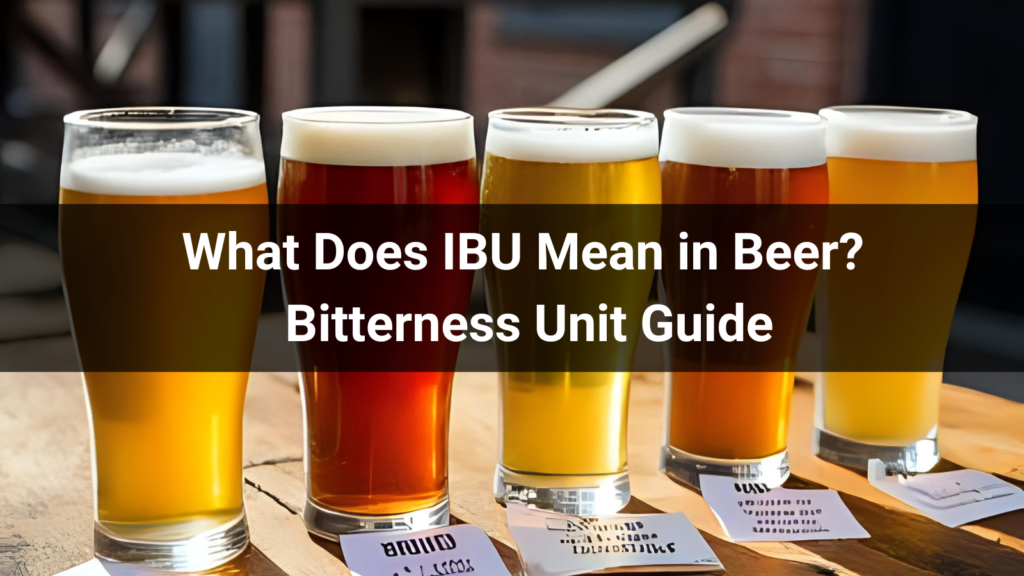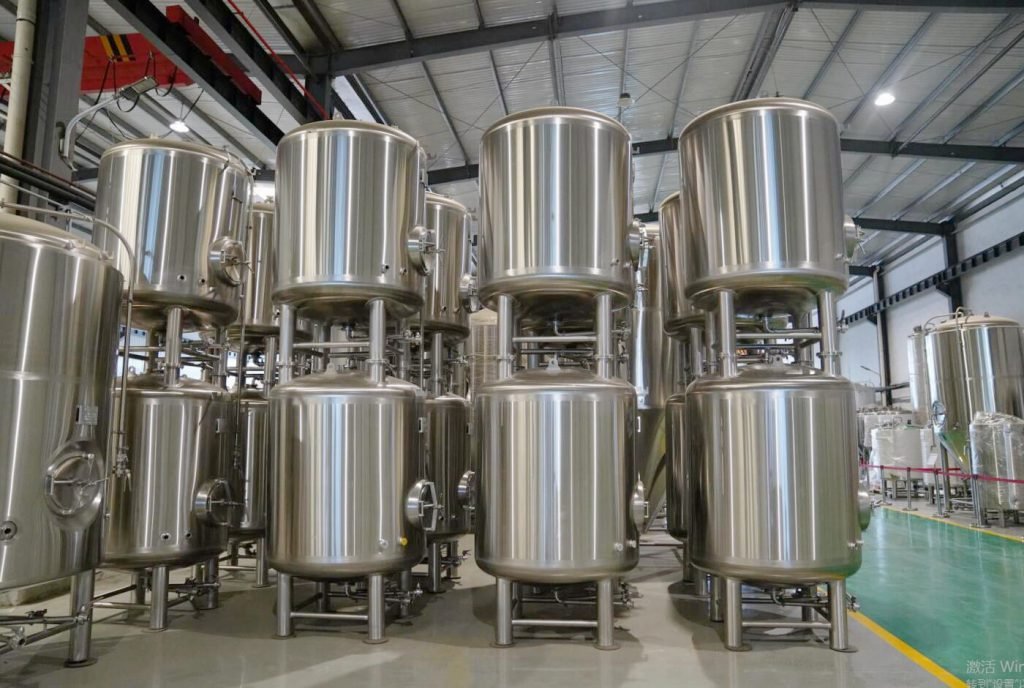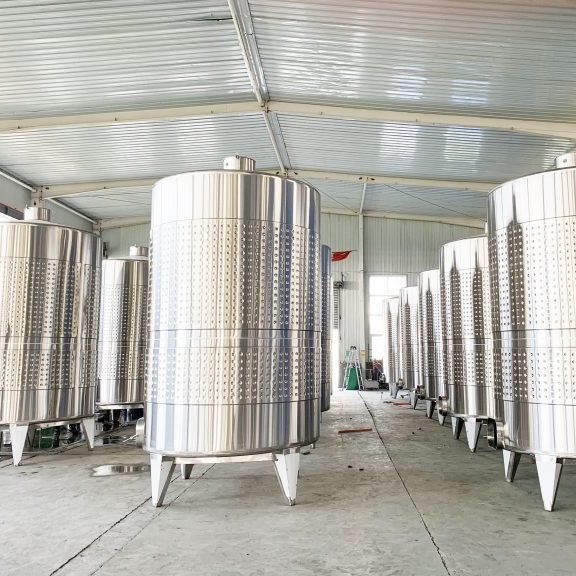
IBU (International Bitterness Units) measures beer’s bitterness derived from hops during brewing. This guide explains how IBU affects flavor, its relationship with beer styles, and why proper fermentation equipment is crucial for controlling bitterness. Discover how Chenma’s stainless steel brewing solutions help brewers achieve perfect IBU balance while maintaining quality and consistency.
Table of Contents
- What Exactly Is IBU?
- How IBU Is Measured Scientifically
- IBU Ranges Across Beer Styles
- 6 Key Factors That Impact IBU
- Common IBU Misconceptions Debunked
- How Fermentation Equipment Affects IBU
- Professional Techniques for Controlling Bitterness
- Chenma’s Brewing Equipment Solutions
What Exactly Is IBU?
IBU (International Bitterness Unit) quantifies iso-alpha acids from hops in beer. One IBU equals 1 milligram of isomerized alpha acid per liter of beer. While commonly called “bitterness units,” IBU specifically measures potential bitterness influenced by:
- Hop varieties (alpha acid content)
- Boil duration
- Wort chemistry
- Fermentation conditions
Contrary to popular belief, IBU doesn’t directly equal perceived bitterness. A 60 IBU IPA might taste less bitter than a 40 IBU pilsner due to malt balance and pH levels. Understanding this distinction is crucial for brewers aiming to create well-balanced beers.
How IBU Is Measured Scientifically

Professional brewers use spectrophotometry to measure IBU:
- Beer samples are acidified
- Iso-alpha acids are extracted into solvent
- Absorbance is measured at 275 nm wavelength
- Results are calculated using standardized formulas
Homebrewers often estimate IBU using software like BeerSmith or Brewer’s Friend that factors in:
- Hop alpha acid percentage
- Boil time
- Wort gravity
- Batch volume
For consistent measurements, proper commercial brewing systems with temperature control are essential to maintain repeatable conditions.
IBU Ranges Across Beer Styles
| Beer Style | Typical IBU Range | Perceived Bitterness |
|---|---|---|
| Light Lager | 5-10 | Very Low |
| Wheat Beer | 10-15 | Low |
| Amber Ale | 20-40 | Medium |
| IPA | 40-70 | High |
| Double IPA | 65-100 | Very High |
| Imperial Stout | 50-80 | Balanced by Malt |
Note how higher-alcohol beers often carry more IBUs without tasting overwhelmingly bitter due to increased malt sweetness. This balance is why precision fermentation control is critical for high-IBU styles.
6 Key Factors That Impact IBU
1. Hop Varieties: High-alpha hops (15-20% AA) contribute more IBUs than low-alpha varieties (3-6% AA)
2. Boil Time: 60+ minute boils maximize isomerization vs. 15-minute “whirlpool” additions
3. Wort pH: Optimal 5.2-5.5 pH increases hop utilization by 10-15%
4. Fermentation Temperature: Cool temperatures (12-15°C) preserve hop compounds
5. Yeast Selection: Some strains biotransform hop compounds
6. Equipment Design: Stainless steel fermentation tanks prevent oxygen ingress that degrades bitterness
Common IBU Misconceptions Debunked
Myth: Higher IBU = Better Beer
Reality: Balance matters most – a 30 IBU helles can be perfect while 100 IBU stout may be undrinkable
Myth: IBU Measures Perceived Bitterness
Reality: It measures chemical compounds – actual perception depends on malt profile and individual palate
Myth: All Hops Contribute Equally to IBU
Reality: Late-addition hops contribute more aroma than bitterness despite high AA%
How Fermentation Equipment Affects IBU
Your brewing system directly impacts IBU consistency:
Temperature Control: ±0.5°C precision in jacketed fermentation tanks prevents bitterness degradation
Oxygen Exclusion: Welded stainless steel with conical bottoms minimizes oxidation
Surface-to-Volume Ratio: Optimal tank geometry ensures even hop compound distribution
Cleanability: Electropolished surfaces prevent bacterial contamination that alters bitterness
At Chenma, our stainless steel tanks feature dimpled cooling jackets for precise thermal management – critical for IBU-sensitive styles like IPAs.
Professional Techniques for Controlling Bitterness
1. Hop Standing: Post-boil hop steeping at 80-85°C increases IBU without harshness
2. First Wort Hopping: Adding hops during lautering smooths bitterness
3. Water Chemistry: Sulfate-to-chloride ratio adjustments emphasize perceived bitterness
4. Yeast Management: High-attenuation strains reduce residual sweetness to balance IBU
5. Equipment Calibration: Regular checks on fermentation tanks ensure temperature/pressure accuracy
Chenma’s Brewing Equipment Solutions
As a leading manufacturer of stainless steel fermentation equipment, Chenma helps brewers master IBU control:
Precision Fermentation Tanks
Our variable capacity tanks feature:
- Laser-welded 304/316L stainless steel construction
- Integrated cooling jackets with ±0.3°C accuracy
- Tri-clamp fittings for hop addition ports
- Conical bottoms for yeast/hop sediment removal
Customizable Brewing Systems
From 100L nano-breweries to 50HL production facilities, our turnkey systems include:
- Whirlpool kettles for optimized hop utilization
- Glycol-chilled fermentation modules
- CIP (Clean-in-Place) systems
- DO (Dissolved Oxygen) monitoring integration
Why Choose Chenma Equipment?
- ISO 9001, CE, and ASME certified manufacturing
- 20,000m² production facility with 200+ technicians
- Custom engineering for unique brewery layouts
- Agitator options for dry-hop integration
Optimize your IBU control with Chenma’s brewing solutions:
WhatsApp: +86 180 6342 1809
Email: admin@sdchenma.com
Address: Pingyuan County Economic Development Zone, Dezhou City, Shandong Province



